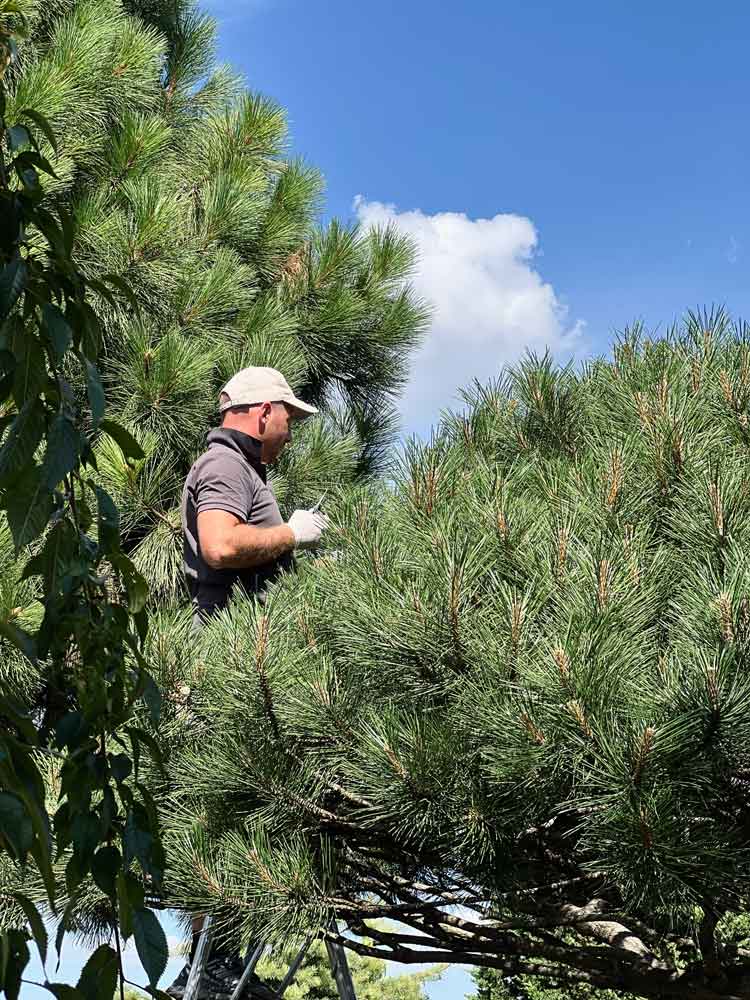Niwaki Trees
At Prestige Garden Studio, we take immense pride in offering you a handpicked selection of Niwaki trees that evoke a sense of Zen and tranquility.
PRICES START FROM €1600


What is a Niwaki Tree?
In Japanese, the word Niwaki means 'garden tree' and is a term that refers to the way trees are grown, trained and pruned to fit into the scale of a Japanese garden.
Immerse yourself in the serene beauty
These living sculptures will transform your garden into an oasis of peace and beauty, ensuring a connection with nature like never before.
Visit our Niwaki Tree Show Garden




Niwaki Tree Pruning & Shaping
Embrace the time-honoured tradition of Niwaki tree pruning and shaping with us and transform your surroundings.
Our skilled arborists meticulously shape these trees, sculpting them with precision and expertise.
Niwaki tree pruning is of utmost importance for the health and longevity of your tree.
We recommend this to be done at least once a year and Prestige Garden Studio are now offering our pruning & shaping service for your Niwaki Tree.


Lets us take care of everything
Let us take on the responsibility of safely delivering and expertly planting your cherished Niwaki tree.
We will ensure the tree is freshly pruned and ready to be admired.
Japanese garden designers are considered more as artists than gardeners
The essence of a Japanese garden lies in four key elements (rocks, plants, ornament and water) and five fundamental design principles (asymmetry, enclosure, borrowed scenery, balance, and symbolism). Together, they form a captivating landscape that we'll delve into here.
The Essential Elements
Japanese Garden Design Principles
Niwaki Tree FAQs
Where can I buy Niwaki trees?
You can purchase your perfect Niwaki tree from us.
Get in touch today or request a call back and we will happily have a relaxed chat about Niwaki trees with you.
Or why not visit us at our Niwaki tree nursery and experience the serene beauty yourself
What is Niwaki?
Niwaki is the Japanese term for the art of shaping and pruning trees, creating unique and beautiful forms.
Are Niwaki trees suitable for small gardens?
Yes, Niwaki trees come in various sizes and can be adapted to fit different garden spaces.
How often do Niwaki trees require pruning?
The frequency of pruning depends on the specific tree species and desired shape, but generally, Niwaki trees require annual or biennial pruning.
Check out our services page where you can find out more about our pruning service.
Can I prune Niwaki trees myself?
While basic maintenance pruning can be done by homeowners, intricate shaping and pruning techniques are best left to experienced professionals
Check out our services page where you can find out more about our pruning service.
Do Niwaki trees require special care?
Niwaki trees require regular watering, proper soil conditions, and occasional fertilization to ensure their health and vitality.
Are Niwaki Trees suitable for Lithuanian & Baltic countries climate?
Absolutely. Niwaki trees are well-suited for the climates typically encountered in Lithuania and the Baltic regions. They are evergreen and carefully cultivated to flourish in these specific environmental conditions.















